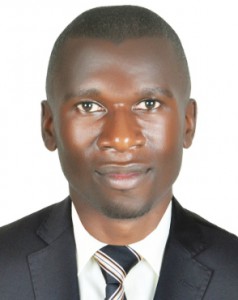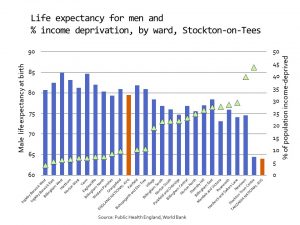Some of the major challenges faced by Pakistan include high maternal and child mortality rates, increasing double burden of communicable and non communicable diseases, poorly funded and poorly governed health systems, lack of accountability and corruption and low health literacy rates, along with ongoing challenges like terrorism and susceptibility to natural disasters like floods and earthquakes. Pakistan spends less than 2% of her GDP on healthcare services. This results in majority of population spending out of their own scant resources

By Nighat Khan
Affiliate at Global eHealth Academy University of Edinburgh
Challenges in Universal Health Coverage in Developing Countries like Pakistan
Article 25 of United Nations’ Universal Declaration of Human Rights 1948, states that “Everyone has the right to a standard of living adequate for the healthand well-being of himself and of his family, including food, clothing, housing and medical care and necessary social services.” (1).
More recently out of the 17 Sustainable Development Goals (SDGs) adopted by the UN General Assembly in September 2015, SDG 3 focuses on health with target 3.8 of SDG 3 referring to achieving universal health coverage (UHC). The latter includes financial risk protection, access to quality essential health-care services and access to safe, effective, quality and affordable essential medicines and vaccines for all, as the foundation stone for achieving all health related targets (2).
After seven decades of the Declaration, the dream of universal coverage (UHC) and health as a basic human right remains a distant reality for majority of inhabitants of the globe in countries like Pakistan. Poor access to promotive, preventive, curative and rehabilitative services of minimal acceptable quality is evident from country profilereports by the WHO, World Bank and UNESCO (3,4 &5).
According to one study, out-of-pocket payment for healthcare leads to an estimated 44 million households to suffer financial burden and 25 million are pushed into poverty each year (6).
More recently WHO reported that nearly 100 million people are pushed into extreme poverty due to health care expenses and over 800 million spent at least 10% of their household budget on health (7).
Protection from high cost of healthcare facilitates better access to healthcare as well as reducing depletion of their poor financial reserves (8).
Countries where public health service delivery is functioning well, with access to acute and chronic care for adults and children and better availability of medicines, show encouraging outcomes, with less out-of-pocket spending.
In a recent series of Lancet, Hogan and coworkers (9), identified four focus areas, i.e. reproductive, maternal, neonatal and child health (RMNCH), communicable diseases, non- communicable diseases (NCDs), service capacity and access and to reach UHC service coverage index, and used geometric means across these four areas. Major inequalities were reported in the baseline estimates across the countries.
The case of Pakistan
Some of the major challenges faced by Pakistan include high maternal and child mortality rates, increasing double burden of communicable and non communicable diseases, poorly funded and poorly governed health systems, lack of accountability and corruption and low health literacy rates, along with ongoing challenges like terrorism and susceptibility to natural disasters like floods and earthquakes. Pakistan spends less than 2% of her GDP on healthcare services. This results in majority of population spending out of their own scant resources (10).
In Pakistan, like any other developing country, health care provision is by public and private sectors. Studies suggest that it is the poor access to public health services, lack of availability of essential medicines and supplies as well as most importantly the perceptions about substandard quality services by public institutions which account for resorting to expensive private medical services. Expensive non-generic essential medicines are purchased for fear of generic being less potent or counterfeit.
Pakistan is one of the six countries with highest maternal and child mortality rates, in contrast to some improvements globally. Pasha et al (11), reported major discrepancies within the country with some regions like Thatta, a southern coastal town, had maternal mortality almost three times higher than other regions (313/100,000 versus 116/100,000). Stillbirth (56.5 versus 22.9/1000 births), neonatal mortality (50.0 versus 20.7/1000 live births) and perinatal mortality rates (95.2 versus 39/1000 births) were twice as high in the region as compared to national rates. Despite the official claims Pakistan is the only country in Global Network where maternal mortality has increased from 231/100,000 to 353/100,000 over their period of study. Despite the tall official claims, urban-rural health inequities are glaring and require urgent official attention.
In another recent study Zakar et al (12), reported only 36.6% women made four or more antenatal visits, 59% were attended by skilled birth attendant and 55.3% gave birth in a health care facility. The authors reported positive correlation between education and socio-economic status of the woman and negative correlation with birth order and her own autonomy. Their findings reemphasize the inequities between rich and poor women
Deforestation in many areas of Pakistan has led to massive monsoon floods since 2010, which pushed the goals to improve the health indicators further down by diverting the existing resources to rehabilitation and disaster management. Geographically the country lies on earthquake fault lines (13). In 2005, Pakistan suffered from one of the deadliest earthquakes in the northern regions killing 80,000 to 100,000 people with extensive damage to already fragile infrastructure like roads and bridges. The rehabilitation is still incomplete after over a decade (14).
Poor health literacy and ancient taboos and practices bar an individual from seeking existing services. LMICs are fraught with such socio-cultural beliefs. It becomes State’s responsibility to provide basic accurate health information through mass campaigns using various resources like information technology, including mobile messages and social and electronic media.
Pakistan is one of the few countries which failed to eradicate polio despite the availability of polio vaccine. Various misconceptions regarding polio vaccination in Pakistan led to a number of children not being vaccinated by parents. If concerted efforts were made by the state to ensure that accurate information regarding the safety of vaccine is imparted to her citizens, we may never had see polio-stricken children in Pakistan (15,16).
Climate changes and water shortages in a traditional agricultural state is leading to rapid urbanization. As a result the infrastructure is under stress in major cities likes Karachi and Lahore due to huge internal migration of the population. Job competition and unemployment has led to drastic increase in urban crime rates.
Rapid urbanization and a growing middle class is accompanied by adoption of urban lifestyle. Rise in Non Communicable Diseases (NCDs) like hypertension, diabetes, cardiovascular, mental illnesses (for e.g. depression) and cancer, while the country is still struggling to fully eradicate infectious diseases and vector borne outbreaks is double jeopardy for countries like Pakistan (17). It is predicted that by 2020, NCDs will cause seven out of ten deaths in LMICs (18). Chronic infections like TB and malaria, dengue and chikungunya outbreaks continue to exact a heavy toll on fragile health systems in many LMICs.
Counterfeit medicines have swamped the country’s market with dangerous trends of self- medication.There is no official pharmacovigilance system in the country. Pharmaceutical regulation is carried out by Drug Regulatory Authority of Pakistan (DRAP). National essential medicine list (NEML), which is based on the WHO standards to encourage generic prescribing, is followed only in public sector hospitals, while private sector prescribers are heavily influenced by pharmaceutical marketing. Pharmaceutical companies have promoted a culture of corruption amongst physicians with the result that the prescribing of generics is very poor. Concerns have been raised about over prescribing and self-medication by the patients, as they can buy almost all medicines with or without prescriptions (19).
After a constitutional amendment in 2011, health and education services were decentralized to the five provincial governments rather than a federal ministry (20). While this was supposed to serve as a source of healthy competition amongst these provinces, leading to improvement in services, it has led to five more potential settings for corruption.
No service delivery is successful without strong and committed leadership. Rwanda has been able to bring positive changes in its health indicators after long drawn conflict, due to committed leadership (21).
For past decade and a half the province of Khyber-Pakhtoonkhwa (KPK) in north-west region of Pakistan had one of the highest rates of terrorist attacks in the country. Girl education and women empowerment suffered the most in hands of terrorists. Effective provincial leadership since 2013, led not only to improvement in law and order situation but a concerted focus on state schools and healthcare facilities led to drastic improvements in child enrolment in state schools and health services, within the same budgetary constraints.
Some positive steps have been taken in provinces like Khyber-Pakhtoonkhwa province where a health insurance scheme has been initiated along with financial incentive for expectant mothers for antenatal visits and child vaccination (22).The province successfully carried out a tree plantation drive and planted nearly one billion trees in the flood prone regions of the province (23).
It cannot be stressed enough here that strong leadership and commitment, proper accountability and political will underpin the foundation of states’ attempts to provide UHC. The natural disasters are inevitable but better preparedness and anticipation of these dangers cause fewer loss of lives of citizens.
References
- http://www.un.org/en/universal-declaration-human-rights ( Accessed December 10th, 2017)
- http://www.un.org/sustainabledevelopment/sustainable-development-goals (Accessed December 10th, 2017)
- http://www.who.int/gho/publications/world_health_statistics/2017/en/ (Accessed December 12th ,2017)
- https://data.worldbank.org/topic/health (Accessed December 12th ,2017)
- https://data.unicef.org/resources/resource-type/country-profiles/ (Accessed December 12th ,2017)
- Jacobs, B., Bigdeli, M., Pelt, M.V., Ir, P., Salze, C. and Criel, B., 2008. Bridging community‐based health insurance and social protection for health care–a step in the direction of universal coverage? Tropical Medicine & International Health, 13(2), pp.140-143.
- http://www.who.int/mediacentre/factsheets/fs395/en/ (Accessed December 12th ,2017)
- Xu, K., Evans, D.B., Carrin, G., Aguilar-Rivera, A.M., Musgrove, P. and Evans, T., 2007. Protecting households from catastrophic health spending. Health affairs, 26(4), pp.972-983.
- Hogan, D.R., Stevens, G.A., Hosseinpoor, A.R. and Boerma, T., 2017. Monitoring universal health coverage within the Sustainable Development Goals: development and baseline data for an index of essential health services. The Lancet Global Health.
- http://www.worldbank.org/en/country/pakistan/overview (Accessed December 12th ,2017)
- Pasha, O., Goldenberg, R.L., McClure, E.M., Saleem, S., Goudar, S.S., Althabe, F., Patel, A., Esamai, F., Garces, A., Chomba, E. and Mazariegos, M., 2010. Communities, birth attendants and health facilities: a continuum of emergency maternal and newborn care (the Global Network’s EmONC trial). BMC pregnancy and childbirth, 10(1), p.82.
- Zakar, R., Zakar, M.Z., Aqil, N., Chaudhry, A. and Nasrullah, M., 2017. Determinants of maternal health care services utilization in Pakistan: evidence from Pakistan demographic and health survey, 2012–13. Journal of Obstetrics and Gynaecology, 37(3), pp.330-337.
- Khan, S.R. and Khan, S.R., 2009. Assessing poverty–deforestation links: Evidence from Swat, Pakistan. Ecological Economics, 68(10), pp.2607-2618.
- Rathore, F.A., Farooq, F., Muzammil, S., New, P.W., Ahmad, N. and Haig, A.J., 2008. Spinal cord injury management and rehabilitation: highlights and shortcomings from the 2005 earthquake in Pakistan. Archives of physical medicine and rehabilitation, 89(3), pp.579-585.
- Khan, M.U., Ahmad, A., Aqeel, T., Salman, S., Ibrahim, Q., Idrees, J. and Khan, M.U., 2015. Knowledge, attitudes and perceptions towards polio immunization among residents of two highly affected regions of Pakistan. BMC Public Health, 15(1), p.1100.
- Murakami, H., Kobayashi, M., Hachiya, M., Khan, Z.S., Hassan, S.Q. and Sakurada, S., 2014. Refusal of oral polio vaccine in northwestern Pakistan: a qualitative and quantitative study. Vaccine, 32(12), pp.1382-1387.
- Gowani, A., Ahmed, H.I., Khalid, W., Muqeet, A., Abdullah, S., Khoja, S. and Kamal, A.K., 2016. Facilitators and barriers to NCD prevention in Pakistanis–invincibility or inevitability: a qualitative research study. BMC research notes, 9(1), p.282.
- World Health Organization, 2013. Global action plan for the prevention and control of noncommunicable diseases 2013-2020.
- Atif, M., Ahmad, M., Saleem, Q., Curley, L. and Qamar-uz-Zaman, M., 2017. Pharmaceutical Policy in Pakistan. In Pharmaceutical Policy in Countries with Developing Healthcare Systems(pp. 25-44). Springer International Publishing.
- Nishtar, S., Boerma, T., Amjad, S., Alam, A.Y., Khalid, F., ulHaq, I. and Mirza, Y.A., 2013. Pakistan’s health system: performance and prospects after the 18th Constitutional Amendment. The Lancet, 381(9884), pp.2193-2206.
- Sekabaraga, C., Diop, F. and Soucat, A., 2011. Can innovative health financing policies increase access to MDG-related services? Evidence from Rwanda. Health policy and planning, 26(suppl_2), pp.ii52-ii62.
- Ramsay, S., 2015. Implementing the WHO Safe Childbirth Checklist in Pakistan. A new approach to reducing maternal and newborn mortality in Khyber Pakhtunkhwa.
- Kharl, S. and Xie, X., Green Growth Initiative will lead toward sustainable development of natural resources in Pakistan: an investigation of “Billion Tree Tsunami Afforestation Project”.










